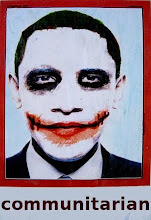To the editor,
Any local who's read the Branding and Marketing Plan for the Copper River Region knows who benefits from increasing traffic on our roads.
The entire region is at the top of the Yellowstone to Yukon Project (Y2Y), which means there are several more layers to our "local" plan. To be part of a wildlife corridor means only regulated human activity is allowed.
In addition to "living in a region filled with spectacular natural beauty," we are most fortunate to live in an area of Alaska uncontrolled by communitarian councils. Unlike Matanuska Borough residents forced to live under Hague regulations (see: Anchorage's Vision 2020), we are not (yet) the Dutch Queen's subjects.
Under the Hague's Marxist economic system promoting sustainable development, free enterprise ceases to exist. Alaskan landowners along Alaskan highways could put up signs advertising other local businesses. If we advertise for each other (a completely legal option) we become good stewards of the original American system and protect economic freedom for future generations of Alaskans.
Lady Shell doesn't share the same needs as Alaskan business owners. Princesses don't need to put handmade signs on Alaskan highways; they have a multi-million dollar advertising budget.
Either we prosper together or we will surely hang it up separately.
Niki Raapana
author of 2020: Our Common Destiny
There's a boring stretch of roadway in Montana that has these signs every so often telling you how many miles it is to the next Walls Drug Store. They sure broke the monotony of miles and miles of gorgeous scenery. As someone who's logged thousands of U.S. road miles, including 11 trips up and down the Alcan Highway, I'm one of those people who read EVERY sign I see and often stop at the places I've read beforehand along the way. I like seeing what's coming up ahead of me, even if I have my Milepost in the car. And some days it's overcast and quite gloomy driving in Alaska.. on those days I bet people read every sign they see.
Plus, there's not one sign anywhere in Kenny Lake that lists all the local businesses. Across America, people are used to reading lists of businesses in strip malls and office buildings, and very often these are on large signs that can be read from the road. All the "plans" recommend ways to promote local businesses. But the plans always promise something they can twist into one of their programs (as with the Citizen's Service Bureau in Seattle in 1999).
Several major Alaskan roads are already designated Scenic Byways. State law forbids signs along public roadsides. We're inside a proposed 50 mile designated buffer zone surrounding the largest international park inside the United States. Our area schoolchildren are required to attend classes designed by HAARP. Chitina is called a "Living Ghost Town" in State brochures (and we wonder if that means Catherine's and Sam's businesses are run by ghosts!). The firm that published the Marketing Plan has interest in McCarthy by the Kennicott Mine. That is the proposed diversion destination as part of Princess Tour Company's Denali Park expansion. The plan is to take busses from McKinley down across the Denali Highway then south on the Richardson and east on the Edgerton Highway (Kenny Lake to Chitina) without stopping all the way down McCarthy Road (which is being rebuilt right now for this purpose). And, the bus visitors expect to be able to view wildlife from the busses, as they do on Kantishna Road into Denali Park. Driving to Kantishna is allowed by permit only.
We are just a small 33 mile stretch of road inside millions of acres of open, once free land. How can advertising our presence "ruin" the landscape? Hmmm.
Out here in rural Alaska, where nobody knows where anything is (including the locals), is it any suprise many summer visitors assume this is ALREADY a wilderness and that no people get to live here?
















No comments:
Post a Comment